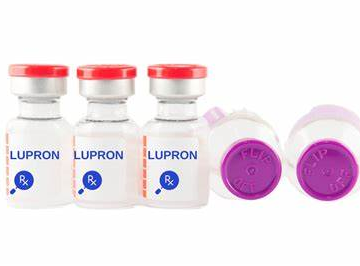
Blue Cross Blue Shield IVF Coverage – Everything You Need to Know
Navigating insurance can feel like wandering through a maze, especially when it comes to something as personal and complex as in vitro fertilization (IVF). If you’re insured with Blue Cross Blue Shield (BCBS) and dreaming of starting a family through IVF, you’re probably wondering: Does my plan cover it? How much will it cost? What steps do I need to take? You’re not alone—millions of people across the U.S. ask these questions every year. This article is your one-stop guide to understanding Blue Cross Blue Shield IVF coverage in 2025. We’ll break it down into bite-sized pieces, uncover hidden details, and give you practical tips to make the most of your benefits. Let’s dive in!
What Is IVF and Why Does Coverage Matter?
IVF is a medical procedure that helps people conceive when natural methods aren’t working. Doctors take an egg, combine it with sperm in a lab, and then place the resulting embryo into the uterus. It’s a game-changer for many, but it’s also expensive—often costing $15,000 to $30,000 per cycle, including medications and follow-ups. For most families, that’s a huge chunk of change, which is why insurance coverage can make or break the decision to pursue IVF.
Blue Cross Blue Shield is one of the biggest insurance providers in the U.S., with plans varying by state and employer. That means IVF coverage isn’t a one-size-fits-all deal—it depends on your specific plan, where you live, and sometimes even your job. Understanding your options can save you thousands and reduce stress during an already emotional journey.
Does Blue Cross Blue Shield Cover IVF?
The short answer? It depends. BCBS offers IVF coverage under many plans, but not all. Some plans fully cover treatments, others cover only parts (like medications or diagnostic tests), and some don’t cover IVF at all. Here’s the scoop:
-
- State Laws Play a Role: As of 2025, 21 states have laws requiring some level of infertility coverage. Places like Illinois, New York, and California mandate that insurance plans, including BCBS, cover IVF to varying degrees. If you live in a state without these laws (say, Wyoming or Alabama), coverage might be harder to come by unless your employer opts in.
-
- Plan Types Differ: BCBS offers plans like HMO, PPO, and Federal Employee Health Benefits (FEHB). For example, the BCBS FEHB Standard Option plan in 2025 covers up to $25,000 annually for IVF procedures with prior approval, while Basic Option plans might not.
-
- Employer Decisions: If you get BCBS through work, your employer decides whether IVF is included. Some companies add it as a perk, others skip it to keep premiums low.
How to Check Your Coverage
Don’t guess—know for sure. Here’s a quick checklist: ✔️ Call the number on your BCBS ID card and ask, “Does my plan cover IVF?” ✔️ Log into your Blue Connect account (or equivalent portal) and look under “Family Planning” or “Infertility Services.” ✔️ Request your Benefit Booklet—it lists exactly what’s covered.
What Does BCBS IVF Coverage Typically Include?
When BCBS does cover IVF, it’s not just one thing—it’s a package of services. Based on 2025 updates and insights from top plans, here’s what you might get:
1. Diagnostic Testing
Before IVF, doctors need to figure out why conception isn’t happening. Covered tests often include:
-
- Bloodwork (e.g., hormone levels, thyroid checks)
-
- Semen analysis for men
-
- Ultrasound or hysterosalpingogram (HSG) to check the uterus and tubes
2. Medications
Fertility drugs are a big part of IVF, costing $3,000–$7,000 per cycle. Common ones covered:
-
- Gonadotropins (stimulate egg production)
-
- hCG (triggers egg release)
-
- Dopamine agonists (for specific hormone issues)
3. IVF Procedures
This is the core of it—egg retrieval, fertilization, and embryo transfer. Some plans cap this at a dollar amount (e.g., $25,000) or a number of cycles (e.g., 3 per year).
4. Additional Services
Depending on your plan:
-
- Embryo freezing and storage (sometimes for 1 year)
-
- Preimplantation genetic testing (PGT) to screen embryos
-
- Artificial insemination (if IVF isn’t needed yet)
What’s Usually NOT Covered?
❌ Surrogacy or donor eggs/sperm (unless specified) ❌ Experimental treatments ❌ Non-medical costs (like travel to clinics)
Breaking Down Costs With and Without Coverage
Let’s put some numbers on the table to see how BCBS coverage changes the game. Here’s a hypothetical example for one IVF cycle:
| Service | Cost Without Insurance | With BCBS Coverage (e.g., FEHB Standard) |
|---|---|---|
| Diagnostic Tests | $1,000–$2,000 | $0–$200 (after deductible) |
| Medications | $5,000 | $300–$400 (co-pay or coinsurance) |
| Egg Retrieval & Transfer | $12,000 | $2,000 (15% coinsurance after deductible) |
| Embryo Freezing | $1,500 | $0 (if included for 1 year) |
| Total | $19,500–$20,500 | $2,500–$2,900 |
Note: Assumes a $350 deductible and 15% coinsurance, common in BCBS FEHB plans for 2025.
Without coverage, you’re looking at a bill that could buy a decent used car. With it, the cost drops to something more manageable—like a fancy vacation. Real families say this difference is why they can try multiple cycles if needed.
How State Mandates Shape Your Coverage
Where you live can flip the script on your IVF benefits. Let’s explore a few examples:
Illinois
Illinois law requires plans like BCBS of Illinois to cover up to 4 IVF cycles if you’ve been trying to conceive for a year (or 6 months if over 35). Medications and diagnostics are included, but there’s a catch—self-insured employers can opt out.
California
California’s 2025 updates mean BCBS plans must cover infertility treatments, but IVF isn’t always guaranteed unless your employer adds it. Diagnosis and meds are more likely to be covered than the full procedure.
Texas
No mandate here, so BCBS IVF coverage depends entirely on your plan. If your employer doesn’t include it, you’re paying out of pocket.
Pro Tip
Move to a mandate state? Kidding—but if you’re near a border, check if your doctor’s office is in a state with better coverage. Sometimes crossing state lines can unlock benefits.
The Federal Employee Advantage – BCBS FEHB Plans
If you’re a federal worker with BCBS FEHB, you’re in luck—2025 brings some of the best IVF coverage yet. Here’s why:
-
- Two Nationwide Options: Both BCBS and GEHA offer plans with $25,000 IVF coverage. That’s above the baseline set by the Office of Personnel Management (OPM).
-
- Drug Cycles: Up to 3 annual cycles of IVF meds are covered, even in basic plans.
-
- Regional Boosts: In 13 states (like California and New York), some plans go further—no cycle limits or higher dollar caps.
Orion Nightingale, a fertility benefits expert, says, “The FEHB expansion in 2025 is a lifeline for federal families. It’s not just about money—it’s about giving people hope and options they didn’t have before.”
During Open Season (Nov. 11–Dec. 9, 2025), compare plans. The Standard Option might be your golden ticket if IVF is your goal.
Steps to Get IVF Covered by BCBS
Ready to start? Here’s a step-by-step guide to maximize your coverage:
Step 1: Confirm Your Plan
Call BCBS or check online. Ask:
-
- “Is IVF covered?”
-
- “What’s the annual or lifetime limit?”
-
- “Do I need prior approval?”
Step 2: Get Diagnosed
See a fertility specialist (in-network if possible). You’ll need an infertility diagnosis—usually after 12 months of trying (6 months if over 35).
Step 3: Request Prior Approval
Many BCBS plans require this. Your doctor submits medical records showing why IVF is needed. Approval can take 24–48 hours.
Step 4: Track Costs
Keep receipts and Explanation of Benefits (EOBs). If denied, appeal—studies show 30% of appeals succeed with persistence.
Step 5: Start Treatment
Work with your clinic to bill correctly. Wrong codes can mean denials, so double-check.
Common Roadblocks and How to Overcome Them
Even with coverage, hiccups happen. Here’s what to watch for:
Denial of Coverage
-
- Why? Missing prior approval, unclear diagnosis, or plan limits reached.
-
- Fix It: Appeal with your doctor’s help. Include studies like the CDC’s stat that 1 in 5 couples face infertility—proof it’s common and necessary.
High Out-of-Pocket Costs
-
- Why? Deductibles or coinsurance add up.
-
- Fix It: Ask your clinic about payment plans or apply for grants (e.g., Baby Quest Foundation).
Limited Cycles
-
- Why? Some plans cap IVF at 2–4 tries.
-
- Fix It: Space treatments across years to reset limits, or switch plans during open enrollment.
Ophelia, a reproductive health advocate, notes, “Denials don’t mean the end. Patients who push back with clear documentation often win—it’s about knowing your rights.”
Latest Research – What’s New in IVF for 2025?
Science is moving fast, and it’s impacting coverage. Here’s what’s hot:
-
- Embryo Screening: A 2024 study in Fertility and Sterility found PGT increases success rates by 15%. More BCBS plans now cover it.
-
- AI in IVF: Clinics use AI to pick the best embryos. While not always covered, it’s a trend to ask about.
-
- Success Rates Up: The CDC reports IVF success rose to 38% per cycle for women under 35 in 2023—better odds mean insurers are more willing to cover it.
Ask your doctor how these advances apply to you—some might be experimental and uncovered, but others could boost your chances.
Real Stories – How BCBS IVF Coverage Helped Families
Let’s meet Sarah, a 34-year-old teacher from Illinois. After two years of trying, she turned to IVF with BCBS of Illinois. “My plan covered 3 cycles, and I only paid $2,000 total. Without it, we’d still be saving up.” Her twins, born in 2024, are proof it worked.
Then there’s Mike, a federal worker in Virginia. His BCBS FEHB plan covered $25,000, but he hit a snag—his first cycle wasn’t pre-approved. “I appealed with my clinic’s help, and they reversed it. Don’t give up!”
These stories show coverage isn’t perfect, but it’s a game-changer when it works.
Beyond IVF – Other Fertility Options with BCBS
IVF isn’t the only path. BCBS often covers alternatives:
-
- Intrauterine Insemination (IUI): Cheaper ($500–$1,000) and sometimes fully covered.
-
- Fertility Drugs Alone: Clomid or letrozole might do the trick without IVF.
-
- Surgery: Fixes like tubal repair can be covered if medically necessary.
Talk to your doctor—sometimes a simpler fix gets you there faster.
Unique Insights – What Others Miss
Most articles stop at “check your plan,” but there’s more to uncover:
Hidden Benefits
Some BCBS plans cover mental health support during IVF. A 2023 study showed 40% of patients experience anxiety—counseling can help, and it might be free with your plan.
Tax Breaks
If BCBS doesn’t cover everything, unreimbursed IVF costs qualify for medical deductions over 7.5% of your income. Save those receipts!
Clinic Partnerships
BCBS partners with networks like WINFertility, offering discounts (up to 40%) on IVF bundles. Ask your provider if they’re in-network.
Caspian Sterling, an insurance analyst, advises, “Look beyond the obvious. Little-known perks like these can cut costs in ways you’d never expect.”
Practical Tips to Save Money on IVF
Even with coverage, IVF isn’t cheap. Try these:
✔️ Use in-network doctors—out-of-network fees can double costs. ✔️ Buy meds through BCBS pharmacy programs (e.g., CVS Specialty) for lower co-pays. ✔️ Freeze embryos from one retrieval for multiple transfers—it’s cheaper than starting over. ❌ Don’t skip prior approval—it’s a fast track to denial. ❌ Avoid boutique clinics promising miracles—stick to proven providers.
Your Next Steps – Take Control Today
Feeling overwhelmed? You’ve got this. Start small:
-
- Call BCBS tomorrow—get your coverage details.
-
- Book a consult with a fertility specialist.
-
- Map out your budget—covered or not, plan ahead.
Every step brings you closer to your goal. You’re not just chasing a dream—you’re building a family.
Let’s Talk – Join the Conversation
What’s your experience with BCBS IVF coverage? Got a tip or question? Drop it in the comments below—we’d love to hear from you! And if this helped, share it with someone who needs it. Together, we can make this journey a little easier.



